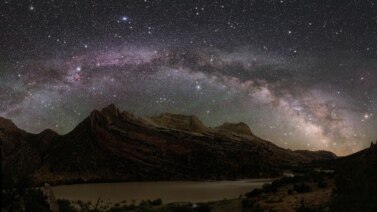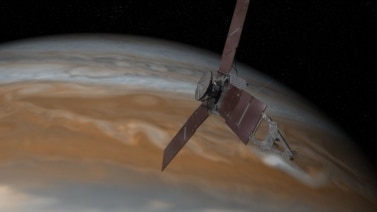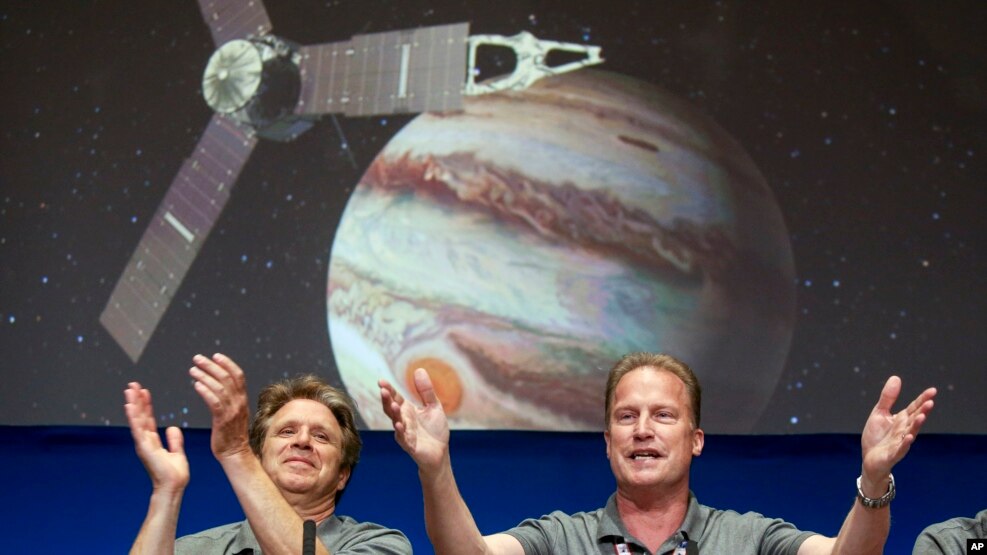
American scientists cheered loudly as their spacecraft, called Juno, entered Jupiter's orbit Monday night.
“Juno, welcome to Jupiter!”
The scientists are with the U.S. space agency's Jet Propulsion Laboratory in Pasadena, California. They carefully watched the spacecraft make it safely into orbit around the fifth planet in our solar system.
Operating on solar power, Juno had traveled 2.8 billion kilometers over five years to get to Jupiter.
It was a proud -- and emotional -- moment for NASA, the National Aeronautics and Space Administration.
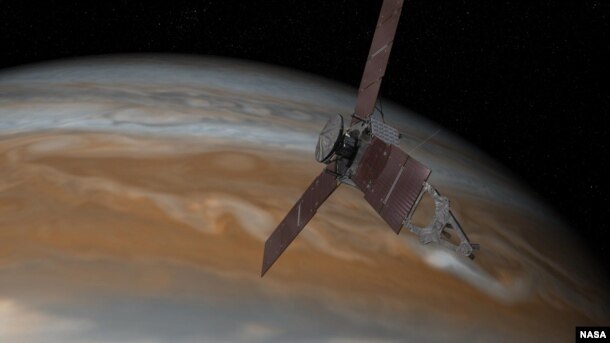
Diane Brown is NASA's Juno program executive.
“I mean it's overwhelming -- the team, the amount of time and effort everyone put into this and the risks that were overcome. It's amazing. I mean, the more you know about the mission you know just how tricky this was and (to) have it be flawless, I mean I can't really put it into words.”
NASA scientists said Juno hit its target almost perfectly. Aiming for an area that was just tens of kilometers wide, Juno was only one second off its target.
The spacecraft is relatively small -- the size of a basketball court -- but Jupiter is the largest planet in our solar system. Jupiter is called a “gas giant” because it does not have a solid surface.
Scott Bolton, the principal investigator of Juno, is from the Southwest Research Institute in Texas. He explained the importance of Jupiter and its more than 60 moons.
“This is the king of our solar system, and its disciples going around it. It's also representative of nature. This is how we look, that's a mini solar system. And so, I think, to me it's very significant because we're finally able to see, with real video, real pictures, this motion. And we've only been able to imagine it up until today.”
Juno will make 37 trips around Jupiter over the next 20 months. It will produce maps of the huge planet and study its surface from just 4,667 kilometers above its clouds.
NASA says it hopes the data from Juno will tell scientists more about the planet's beginnings, structure, atmosphere and magnetosphere.
Scientific equipment on Juno will examine Jupiter's very active atmosphere, which is covered by thick clouds. They will also record information about the planet's gravitational pull. And they will gather information about its magnetic field, which is 20,000 times stronger than that of Earth.
Dangerous Radiation
One danger Juno faces is intense radiation from Jupiter. Over the planned lifetime of its mission, Juno will face the same amount of radiation as a dental patient would experience in over 100 million X-rays.

So scientists protected the spacecraft's computer with strong titanium walls that are almost 1.27 centimeters thick and weigh 172 kilograms. Scientists hope this thickness will protect it from the extreme radiation.
Without that protection, experts say the spacecraft's electronic brain would likely be destroyed before the end of the very first orbit around the planet.
Scientists say Jupiter is mostly composed of two gases, hydrogen and helium, like the sun. They say the levels of oxygen and water in the atmosphere may tell how the planet and our solar system were formed. Researchers also hope to learn if Jupiter has a solid center.
In addition to carrying scientific instruments, the spacecraft has a camera. It has already sent back images of the planet's larger moons. NASA says it will work with the public and take suggestions on where to point the camera.
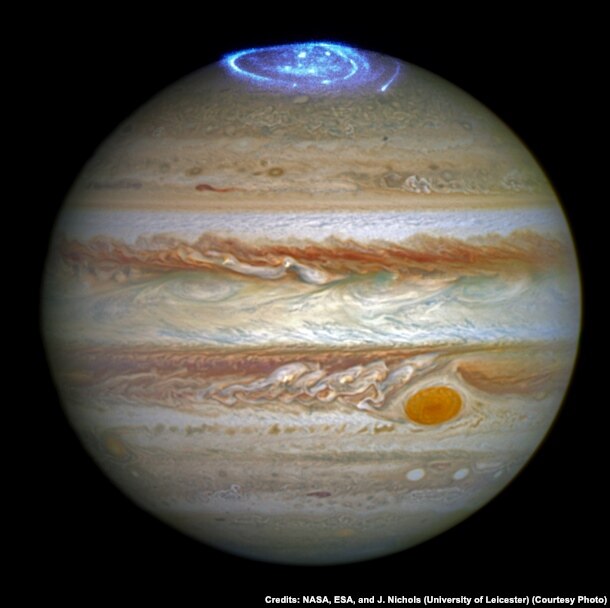
Many people will want a closer look at the colorful orange, red, white and brown clouds moving quickly across the planet. Scientists will also get a close-up view of the “giant red spot” Jupiter is famous for -- it is a storm larger than the size of Earth.
Juno will and begin sending information from its seven instruments to NASA next month.
Steve Levin, a Juno project scientist, said he wants to see that data.
“What I'm really looking forward to is getting up close and personal with Jupiter, in about 53 days on August 27 with all of our science instruments on and taking data, and uh, see what we can find.”
Juno is the second NASA spacecraft to reach Jupiter. The Galileo spacecraft orbited Jupiter from 1995 to 2003. Galileo studied the planet and its four largest moons -- Europa, Ganymede, Io and Callisto. Earlier spacecraft flew by Jupiter as they traveled to the outer parts of our solar system.
Juno will circle and study Jupiter until 2018, when it will enter the planet's atmosphere. That action is expected to destroy the spacecraft.
I'm Anne Ball.
VOA Correspondent Mike O'Sullivan reported this story from Pasadena, California. VOA's Richard Green in Washington provided additional reporting. Christopher Jones-Cruise and Anne Ball adapted their reports for Learning English. George Grow was the editor.
We want to hear from you. Write to us in the Comments Section, or visit our Facebook page.
Words in This Story
solar - adj. relating to the sun
orbit - n. a circular path
flawless - adj. without any mistakes
disciple - n. someone who spreads the teachings of a famous person
significant - adj. important
magnetosphere - n. an area of space surrounding an object in space that is dominated by the object's magnetic field
